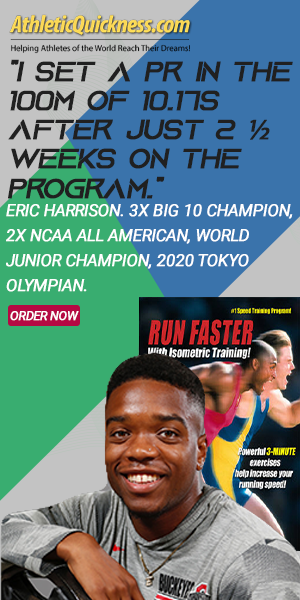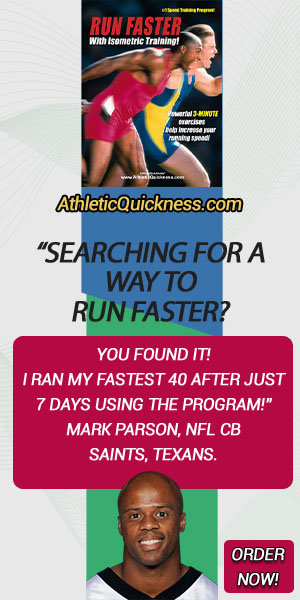The type of isometric training we offer to longer distance runners is the same as we do for sprinters and here is the reason why:
Our experience has shown that exercises outside of actual running to improve one’s speed (sled pushes, resisted running with parachutes, etc.), runners and sprinters will only engage in those exercises specifically aimed at improving the push or drive phase of running. This phase of running is more aggressive in sprinters than it is for distance runners, but the muscles involved in both are the same, mainly the glutes, hamstrings, quads and calves.
There is nothing wrong with exercising these muscles, and we highly recommend one do. However, our experience has also shown that 90% of athletes wanting to improve their speed, whether in shorter or longer distance races, stop with training these muscles. The problem is that running (as well as walking and jogging) is more complicated than simply pushing off the ground.
Running involves the whole body (both legs, both arms and torso) to be in perfect balance during the event or activity, and the one muscle group that keeps everything working at a high level outside those in the push phase is the group involved in the swing phase. This muscle group is known as the hip flexors, and it is the largest muscle group in the body; but, despite that, it is also completely misunderstood, completely under-trained and therefore any athlete looking to get faster needs to strengthen it.
The problem for many, however, is that there are very few exercise machines in your typical gym (only one I can think of) that can remotely train these muscles the way they need to be for effective speed gains. This muscle group is completely forgotten, and athletes are often left wondering why they can’t seem to run as fast as they think they should. This is where our programs excel, because they address these muscles in three different ways and at multiple positions. It also does this without any machines and can be done at home.
This may sound easy and, for the most part, implementing the exercises is. However, because these muscles are usually very weak at positions needed for optimal sprinting and jogging, the athlete will soon realize the necessity to increase the strength in this group, and our programs make it very easy to do. Results come quickly and most see noticeable improvements in less than 14 days whether they are sprinters or distance runners.





